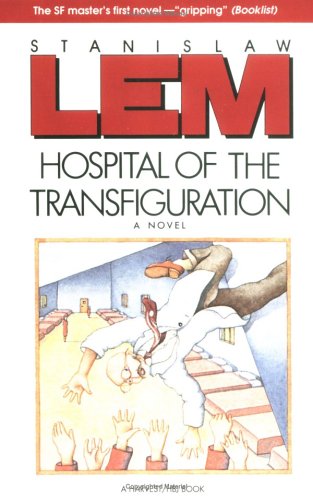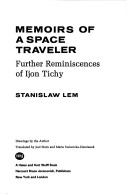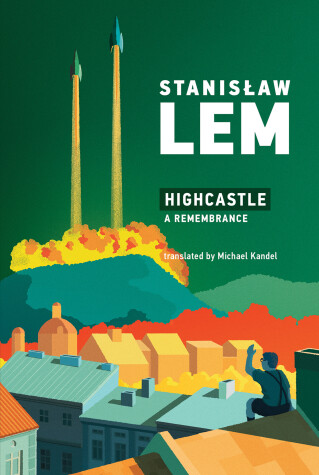The MIT Press
6 total works
Taking place within the confines of a psychiatric hospital, Stanisław Lem's The Hospital of the Transfiguration tells the story of a young doctor working in a Polish asylum during World War II. At first the asylum seems like a bucolic refuge, but a series of sinister encounters and incidents reveal an underlying brutality. The doctor begins to seek relief in the strange conversation of the poet Sekulowski, who is posing as a patient in a bid for safety from the occupying German forces. Meanwhile, Resistance fighters stockpile weapons in the surrounding woods.
A very early work by Lem, The Hospital of the Transfiguration is partly autobiographical, drawing on the author's experiences as a medical student. Written in 1948, it was suppressed by Polish censors and not published until 1955. The censorship of this realist novel is partly what led Lem to focus on science fiction and nonfiction for the rest of his career.
Memoirs of a Space Traveler follows the adventures of Ijon Tichy, a Gulliver of the space age, who leads readers through strange experiments involving, among other puzzling phenomena, faulty time machines, intelligent washing machines, and suicidal potatoes. The scientists Tichy encounters make plans that are grandiose, and strike bargains that are Faustian. They pursue humanity's greatest and most ancient obsessions: immortality, artificial intelligence, and top-of-the-line consumer items.
By turns satirical, philosophical, and absurd, these stories express the most starkly original and prescient notions of a master of speculative fiction.
Naturally, Hal refuses to be acclimated by the "Adapt" people. He prefers to figure it out all by himself, be a stranger in a strange land, draw his own conclusions. And he does.
"In the unlikely event that a science-fiction writer is deemed worthy of a Nobel Prize in the near future, the most likely candidate would be a Pole named Stanislaw Lem," states THE NEW YORK TIMES. And FANTASY & SCIENCE FICTION writes,
Acting on Hogarth's suggestion that the signal may be a mathematical description of an object (possibly a molecule), the scientists are able to use part of the data to synthesize a substance with unusual properties. Two variations are created: a glutinous liquid nicknamed "Frog Eggs" and a more solid version that looks like a slab of red meat called "Lord of the Flies" (named for its strange agitating effect on insects). There is some speculation that the signal may actually be a genome and that "Frog Eggs" and "Lord of the Flies" may be a form of protoplasm; possibly that of the alien creatures that presumably sent the signal...
With Highcastle, Stanisław Lem offers a memoir of his childhood and youth in prewar Lvov. Reflective, artful, witty, playful—“I was a monster,” he observes ruefully—this lively and charming book describes a youth spent reading voraciously (he was especially interested in medical texts and French novels), smashing toys, eating pastries, and being terrorized by insects. Often lonely, the young Lem believed that he could communicate with household objects—perhaps anticipating the sentient machines in the adult Lem's novels. Lem reveals his younger self to be a dreamer, driven by an unbridled imagination and boundless curiosity.
In the course of his reminiscing, Lem also ponders the nature of memory, innocence, and the imagination. Highcastle (the title refers to a nearby ruin) offers the portrait of a writer in his formative years.




